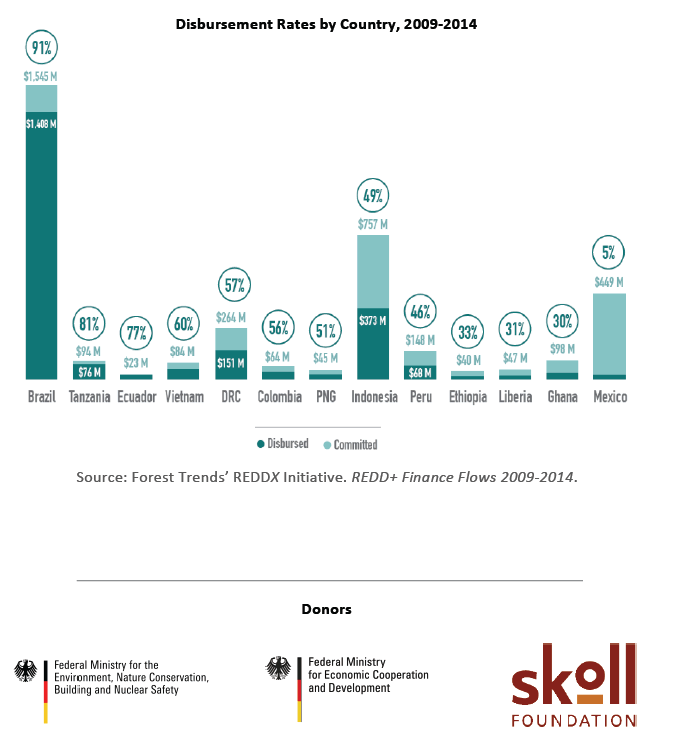Media Contact
Will Tucker
+1 202-446-1996
[email protected]
11 November 2015 | WASHINGTON, D.C. | Forest Trends, a non-profit organization that tracks global
forest developments, today released the most comprehensive analysis to date of the United Nations’
program for protecting forests and generating forest conservation finance.
The study follows the money trail in 13 countries that account for 65 percent of the globe’s tropical
forest cover under the U.N.’s Reducing Emissions from Deforestation and Forest Degradation (REDD+)
initiative, a key part of the ongoing U.N. climate negotiations. The research by Forest Trends’ REDDX
(REDD eXpenditures) initiative covers six years from 2009 to 2014, the last year for which complete data
is available. It tracks more than $6 billion of the nearly $10 billion that has been committed or pledged
to REDD+ programs.
Key findings of the new report show:
• Of the $3.7 billion committed 60 percent or $2.2 billion came directly from individual donor
countries. Norway, the largest donor by far, has contributed nearly half of all those funds;
Germany, Japan and the United States committed a combined total of $730 million; and the
U.K., Australia and France contributed most of the remainder.
• The private sector contributed 10 percent of all REDD+ finance commitments tracked in these
13 countries.
• Brazil and Indonesia together received nearly two-thirds of all funding pledged or committed.
The two countries have some of the world’s largest tropical forest cover.
• The big winner that has received the most money thus far: Brazil’s Amazon Fund, which had
received $867 million from Norway by the end of 2014.
• Payments of promised funds have grown steadily, with 62 percent of all committed funds paid
out by the end of 2014. Most of the money has gone directly to government agencies, with
small amounts supporting the work of international organizations.
• The percentage of payments paid out to participating countries varies dramatically, from Brazil,
which has received 91 percent of its promised funding, to Mexico, which has gotten only 5
percent of the money pledged to it.
“This new study shows that major challenges remain for REDD+ — especially for generating enough
money to fund global forest protection and finding ways to raise private interest in carbon markets,”
said Gus Silva-Chávez, REDDX program manager.
“Donor countries are increasingly requiring REDD+ countries to demonstrate the concrete progress they
are making in tackling deforestation, and then transferring funding if and when positive results are
achieved. If countries don’t reduce their deforestation, then they don’t get the donor money,” says
Brian Schaap, REDDX senior program associate.
“In Latin America, nearly 80% of funding was channeled directly to REDD+ country governments or the
Amazon fund, proving that despite early skepticism, a majority of REDD+ funding has been provided
directly to tropical forested countries within the region,” says Jessica Breitfeller, REDDX senior program
associate for Latin America.
Based on its findings, Forest Trends REDDX analysts say negotiators in Paris and beyond need to:
• Establish greater clarity on long-term plans for financing.
• Improve coordination of distributing money to participating countries and organizations.
• Stimulate much greater private sector and market participation.
Forest Trends research is based on annual surveys and in-person interviews on financial flows, as well as
validation of results in each of the participant countries.
For more information, read the full report and visit our website reddx.forest-trends.org. We will also be
releasing a series of national REDDX reports, as well as commentary and analysis on global REDD+
finance developments in Paris and beyond.

